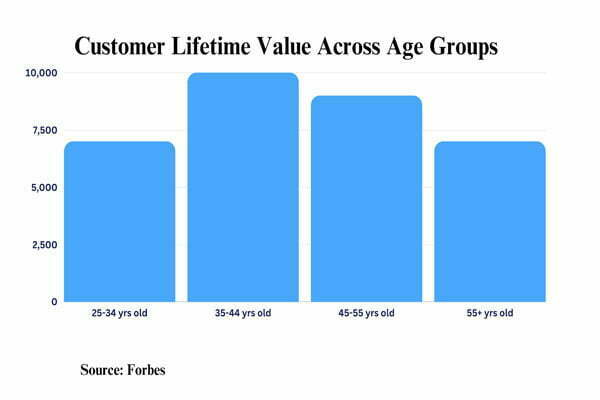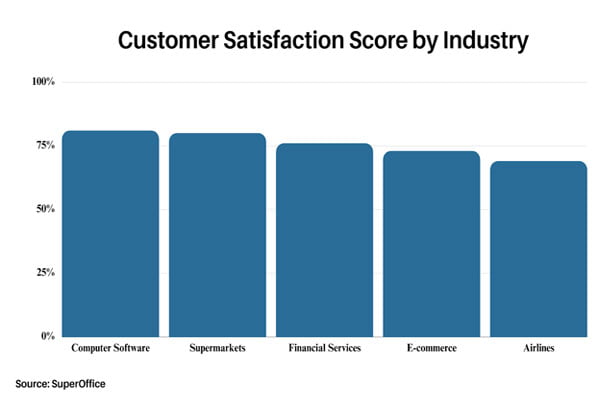Customer engagement is the lifeline of any business. Research shows that engaged customers have higher retention rates, spend more, and act as brand advocates.
A staggering 86% of buyers are even willing to pay more for a better customer experience. It’s clear that enhancing engagement should be a priority for companies today.
One of the most important yet overlooked factors influencing engagement is a company’s internal workflow. Every process, from lead generation to post-purchase support, shapes the customer’s perception of your brand.
Think of it this way: a systematic flow ensures things proceed smoothly. If the workflow is chaotic and disorderly, you won’t get anything done. The results will be poor, which will affect your image and business. Optimizing workflows is thus integral for delivering superior experiences.
Workflow Automation: A Catalyst for Enhanced Customer Experience

Leveraging automation is one of the most effective ways to optimize workflows. Technologies like AI, machine learning, and RPA can programmatically enhance processes. This has manifold benefits:
Enhanced Value Perception
With automated workflows delivering better experiences, companies can pass on savings through discounts and loyalty programs. This strengthens value perception.
The demand for automation is evident, with nearly 40% of customer interactions expected to be automated using AI by 2023. The Contact Center for Microsoft Teams exemplifies how customizable workflows will define the future of customer engagement.
Faster Turnaround Times
Automating repetitive tasks reduces human workload, accelerating workflows. Chatbots handle common questions instantly. Documents are drafted and sent via automated sequences. Such efficiencies enable real-time engagements.
Improved Service Quality
Bots never tire or have bad days. They deliver consistent service 24/7. Automated workflows also minimize human errors that frustrate customers. Together, they foster positive engagements.
The Direct Impact of Business Processes on Customer Engagement

Most customers don’t see the inner workings of a company. But every internal process inevitably impacts their satisfaction levels. Quick response times, prompt issue resolution, and relevant recommendations are all tied to how seamlessly your workflow operates.
Delays due to inadequate workflows frustrate customers. You probably experienced such delays and frustrations yourself. A majority of companies believe they provide a better experience than their customers think they actually get. Bridging this gap requires optimizing workflows to align outputs with customer expectations.
You can opt to conduct surveys and feedback after a service is done to gauge customer satisfaction. This is the best way to see if there’s anything you need to improve with your workflow. Additionally, it can also serve as motivation when you and your employees see words of satisfaction and encouragement.
The returns of engagement optimization are substantial. Acquiring new customers costs 7 times more than retaining existing ones. A mere 5% increase in retention can boost profits by 25-95%. The onus lies on workflows capable of engaging customers throughout their lifecycle.
To illustrate, let’s examine a common workflow order fulfillment. When a customer places an order, it triggers a sequence of processes from order validation to shipment and delivery. Any inefficiency along this workflow results in delays that frustrate the customer.
Robust order fulfillment workflows ensure seamless handoffs between teams, accurate order processing, and proactive communication at each step. This delights the customer with quick delivery of the right items. Customers also appreciate it when they’re consistently updated on the progress of their items.
Such optimized workflows require enabling technologies like order management systems and inventory management software. Integrated technology such as WMS software solutions usually helps streamline inventory management, warehouse operations, and retail fulfillment workflows, ensuring that the right products are available, picked, packed, and shipped to customers in a timely manner. You can also use shipment tracking tools. They unite interconnected processes for frictionless execution.
By fine-tuning workflows end-to-end, companies can deliver consistent and positive customer experiences. The impact spans both customer satisfaction and profitability through enhanced loyalty and advocacy.
The Integral Role of Workflow in Customer Experience

Customer experience encompasses every touchpoint across a buyer’s journey with your brand. From initial discovery to post-purchase support and beyond, workflows fuel each of these touchpoints.
For example, social media and email campaigns are governed by workflows that define audience targeting. They also define content personalization and send schedules. Support processes are dependent on workflows that assign and escalate cases. Your website’s workflows control lead routing, pricing updates, and more.
With experience spanning multiple channels, consistent workflows become crucial. Research by Outgrow shows that 64% of customers expect engagements tailored to their history and preferences. Workflows make this level of personalization possible.
For instance, the customer shops on your website. They’d want to have their cart saved by the next time they decide to buy the items. They might also like item recommendations based on their search history. This is possible if you have a membership feature on your site. Having access to such an efficient experience will incentivize customers to sign up as well.
Key Determinators of Positive Customer Experience
While customization is invaluable, several other factors influence the overall experience. These include:
Turnaround Times: Fast response and resolution times are expected, especially with support issues. Slow workflows directly impact this.
Product Satisfaction: Seamless onboarding, education, and integrations shape product experiences.
Service Quality: From empathetic service to proactive communication, workflows enable prompt and personalized engagements.
Value Perception: Workflows that offer exclusive perks and discounts can increase perceived value.
The stakes are high, with customers less likely to engage after just one bad mobile experience. Optimizing workflows to excel across these metrics is key.
The Future of Workflow Automation in Business
Customer expectations are rapidly evolving. Meeting them requires agile workflows capable of seamless modifications. This is enabled only through end-to-end automation.
As companies embrace digital transformation, they must leverage intelligent platforms that integrate datasets, orchestrate omnichannel workflows, and enable easy visual configuration. The possibilities with such solutions are limitless.
Businesses that invest in building the workflow ecosystems of the future will gain a distinct competitive edge. They can deliver incredibly personalized, real-time customer experiences that exceed expectations on all fronts. The road ahead is an exciting one for companies committed to engagement innovation through automation.
Frequently Asked Questions
Q1: How does workflow automation directly influence customer satisfaction rates?
Automation improves process efficiency and consistency, enabling quicker response times and higher-quality engagements. This directly translates to improved customer satisfaction.
Q2: What are the potential drawbacks or challenges of implementing workflow automation in customer engagement processes?
Challenges include integration with existing systems, change management, and the need for specialized skills. Proper planning and platform selection are key to a successful implementation.
Q3: How can businesses ensure that their workflow automation tools remain up-to-date with evolving customer expectations?
The ideal workflow automation platform is cloud-based, leverages AI, and allows easy drag-and-drop configuration of processes. This empowers teams to modify workflows to match customer needs continually.
Bottom Line
Customers have higher expectations and demands from those in the customer service industry. If they approached your team before, they expect continuity. It doesn’t matter who’s behind the screen as long as the service received is seamless and consistent. The ability to customize workflows is pivotal in providing stellar customer experiences in today’s digital era.
Workflow is important in determining how satisfied the customers will be. It’s what holds the customer’s hand the entire time during their buyer’s journey. Even after their purchase, you’re the ones they’ll run to for questions, concerns, and more.
However, automation ushers in new possibilities for innovation that companies must capitalize on to gain a competitive advantage. By optimizing workflows powered by intelligent automation, brands can engender higher satisfaction. They’ll also achieve customer loyalty and more revenues through elevated customer engagement.
















